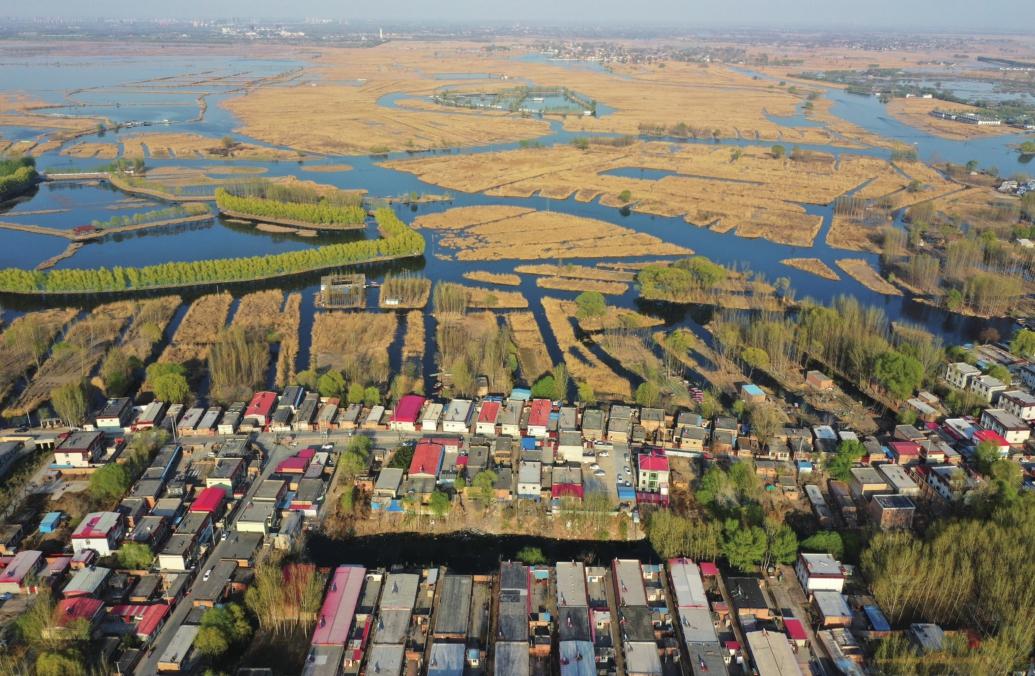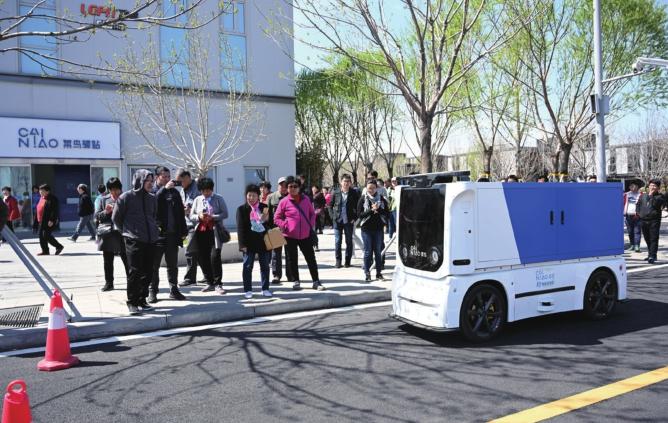Smart Green City
2019-04-15

Ever since the unveiling of the blueprint two years ago, Xiongan New Area, featuring hi-tech, smart urban planning and a sound ecological environment, has been in the media spotlight. In the ensuing years, changes have started to take shape. Express railways linking Xiongan and Beijing are under construction, with more than 1,300 companies setting up branches in the area. Now, large-scale construction is about to begin. The following is an edited excerpt of a Xinhua News Agency report on this event:
Chinas Xiongan New Area, a millennium green city featuring innovative development in north China, is set to be transformed from just a blueprint to a tangible reality starting this year.
On April 1, 2017, China announced plans to establish Xiongan New Area, located about 100 km southwest of Beijing in Hebei Province, in what an offi cial statement called “a strategy that is a signifi cant national event that will have lasting importance for the millennium to come.”
Chen Gang, Vice Governor of Hebei, who also heads the management committee of Xiongan, said a large-scale building phase will start this year.
In January, Chinas central authorities approved the 2018-35 master plan for the area. More than 200 teams and 1,000 experts from China and abroad participated in the drafting of the plan, Chen said, adding that “a carefullydrafted plan ensures the smooth and quick construction of the area.”
Xiongan spans the three counties of Rongcheng, Anxin and Xiongxian in Hebei. Work is currently underway to lay underground pipelines and the water, power and gas infrastructure of the area, which is expected to grow to 1,770 square km, or roughly the size of Shenzhen in Guangdong Province.
Modern and green
Construction is slated to begin soon in the Rongdong area, a 13-square-km residential area that is expected to be home to 170,000 people to the east of Rongcheng. The fi rst batch of residents, both resettled locals and new residents, will move into the compound by 2020, said Yu Zhenhai, director of the areas comprehensive law enforcement bureau.
Authorities are making detailed plans to transform ordinary rural towns into 22 special townships, each featuring different characteristics such as intelligent technologies, a seniorfriendly environment and creative industries, he said.
Construction is underway in the areas northeast Zangang Township for an intercity railway between Beijing and Xiongan. The express link, set to be operational by 2020, will cut the commuting time to 30 minutes.
Xiongan will become a modern city that is green and intelligent with “relatively strong competitiveness and human-nature harmony by 2035,” according to the master plan that stresses high-quality development.
Before building the new city, the fi rst step was to add greenery and plant trees. Near the railway construction site is an extensive forest that was cultivated over a year ago. The afforestation project, spanning over 7,000 hectares, started in November 2017, and took more than 50,000 people to plant over 11 million pine, peach and locust trees.
“Each tree has its own identity card because they are digitally managed so that we know when a certain section of trees needs weeding, watering or trimming,” said Gao Qiuliang, one of the tree planters.
This year, more than 13,000 hectares of trees will be planted across Xiongan, increasing the forest coverage rate from 11 percent to 40 percent in the future. Intensive efforts are also underway to clean up and feed the vast Baiyangdian wetland.
In February, a pump station started operation at Baiyangdian to draw water from the Yellow River, which is about 482 km away. The pump station feeds water into the wetland during winter when the water level is low.

Xiongans polluting industries—shoemaking, dyeing and plastic manufacturing—are being relocated or transformed with ecofriendly technologies. Only research and exhibition functions will be retained, said Liang Yuan, deputy director of the area management committee.
“In the future, about 70 to 80 percent of the new areas growth will come from high-end and hi-tech industries,” said Wu Hequan, deputy director of the expert advisory committee of the Beijing-Tianjin-Hebei coordinated development.
High-end professionals
Das Intellitech, a Shenzhen-based company specializing in intelligent solutions in medical services, transportation and architecture, has set up its north China headquarters in Xiongan.
“Less than a week after our new offi ce was set up in Xiongan, we were able to hire the staff we need and want,” said Lu Feng, company board chairman. It is among the first group of enterprises to establish operations in the Xiongan New Area Citizen Service Center.
“Our experience in Pudong of Shanghai and Shenzhen has proven helpful in Xiongan. And our profi ciency and technological level is further improved in the building of Xiongan,” Lu said.
“Many other cities including Shenzhen are asking our technical staff back to share their latest experience,” he said.
According to the plan, Xiongan will prioritize industries such as new generation information technology, the modern life science and biotechnological industry, and the new material, modern services and green agricultural sectors.
The area will focus on attracting talent in these industries, as well as in the fi nance, commerce, digital, education and medical fields, according to Liang, who said, “Good-quality schools and hospitals will be adequately allocated here to keep the talent.”
A group of kindergartens and elementary and secondary schools in Xiongan have been paired up with leading schools in Beijing to improve their level of service, he said.
According to the master plan, Xiongan will strive to build fi rst-class technology and innovation platforms with the help of the top research universities to foster talent, innovative policies and mechanisms to serve the growth of tech fi rms. In addition, a Xiongan university is expected to be established, authorities said.
International reach
Xiongan is aiming to become a signifi cant part of the Beijing-Tianjin-Hebei cluster and plans to take over Beijings non-capital functions and provide a Chinese solution to “big city malaise”—overcrowding, pollution and traffic congestion.
It has attracted increasing attention from overseas companies, given its national significance and substantial development potential.
Jerome Frost, from British design fi rm Arup which participated in the areas design, said he proposed the use of recycled materials to help the city work in a balanced way and become a new benchmark for global cities.
Many cities across the world are grappling with this issue, and Xiongan provides an opportunity to readdress it and demonstrate new possibilities.
“The designer teams come from different backgrounds and have different concepts and ways of thinking, which brings a truly global vision to how Xiongan is built,” said Li Xiaojiang, who is also on the expert advisory committee of the Beijing-Tianjin-Hebei coordinated development.
Xiongan will also actively serve Beijings role as an international exchange center in its proactive expansion of opening up, according to the master plan document. This year, it will pioneer policies on foreign capital and trade facilitation as part of the further opening-up drive, authorities said.
“Xiongan is a place to realize dreams and self-value,” said Luo Shuang, a young graduate of engineering from Tsinghua University, who came to Xiongan last July.
“It is rather common for us to work overtime, and every day is a challenge, but it is a great honor to be part of the efforts of building a high-profi le city from scratch,” he added.
